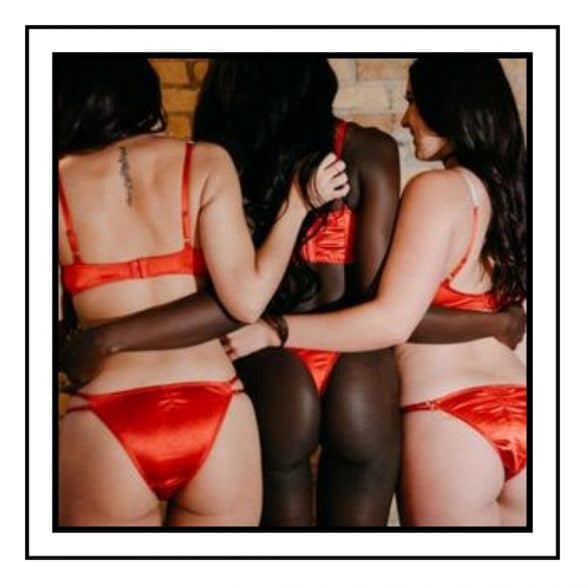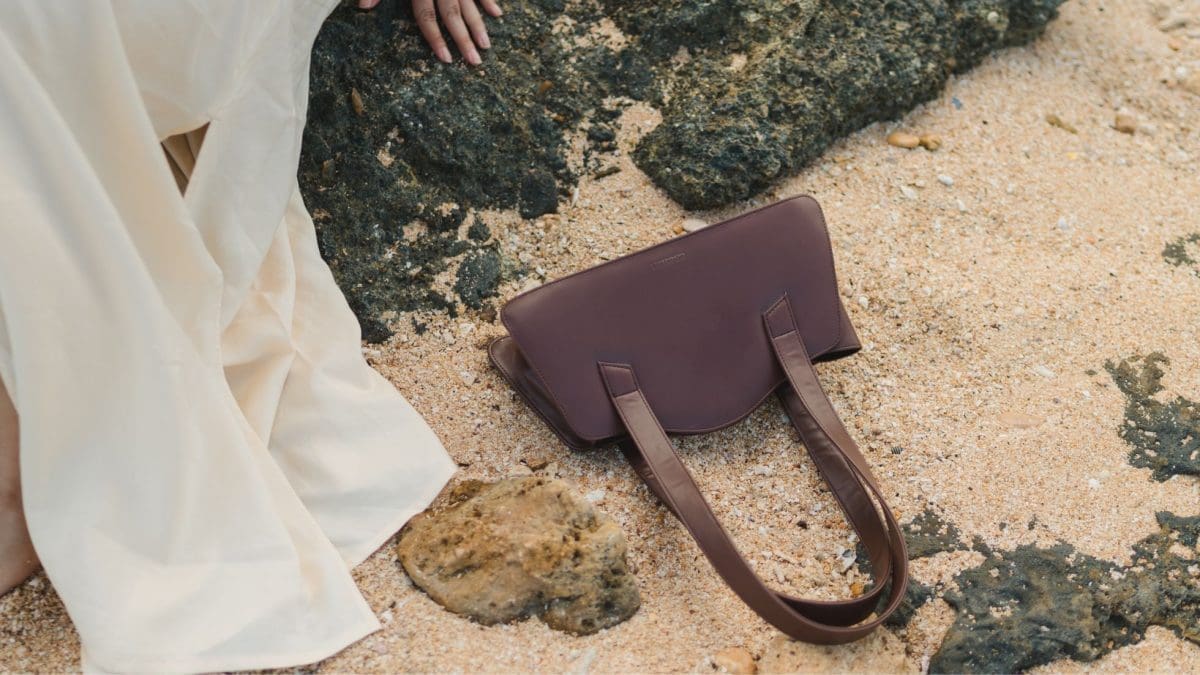
Learn about the entire Piñatex fabric line, tech specs, and just how sustainable it is. We’re going to take a deep dive on this fabric so read on!
What is Piñatex?
Piñatex is a new type of eco-friendly fabric that is made from the waste of pineapple farms. Prior to the creation of this new material, the waste was either left to rot or burned. This new method of processing helps to reduce those practices and hopefully one day eliminate them completely. Most notably, Piñatex requires no additional land, water or fertilizer.
If you’ve read our article about Cotton Sustainability, then you know that to make one single t-shirt takes somewhere around 2,700 liters of water. While Piñatex isn’t directly competing with cotton, it’s damn impressive to know that a fabric is being made without any additional water.
The families can earn additional income via its processing and the subsequent waste can later be used as natural fertilizer or biofuel, a potentially zero-waste outcome. With an estimated 27 million tons of pineapple leaves discarded annually, the abundance of raw materials could be very promising for this cutting-edge fabric.
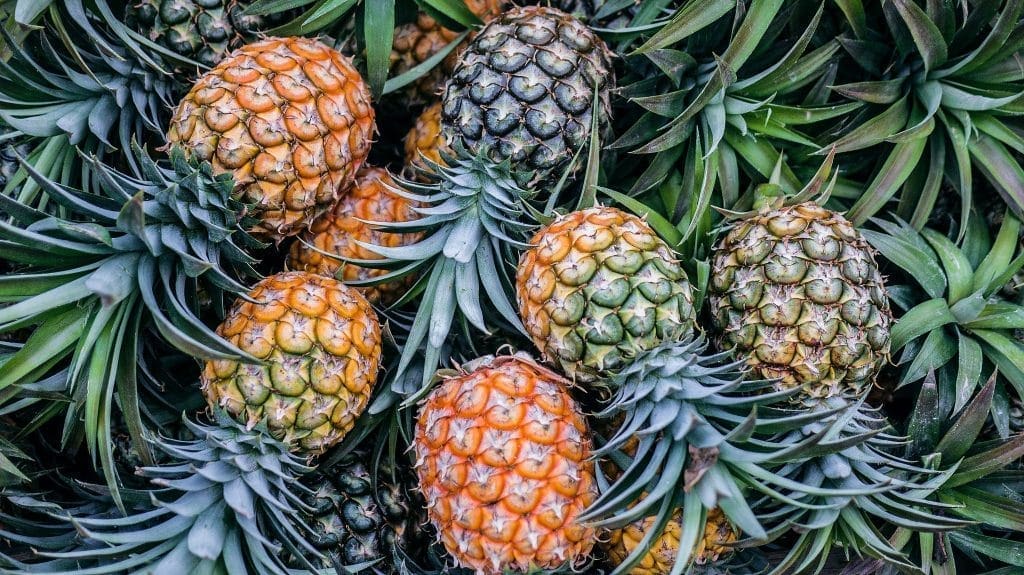
The Vision of Piñatex
After having worked with leather throughout her fashion career, Piñatex inventor Carmen Hijosa noticed just how devastatingly toxic leather tanneries are for both people and the environment.
“I realized that leather is so unstainable. It’s toxic. It’s a toxic production. It’s toxic for people and the environment…So I decided absolutely there and then that I didn’t want to work with leather anymore.”
-Carmen Hijosa, Creator of Piñatex
Hijosa’s resulting vision led her to develop a solution that not only focused on environmental sustainability but ethical responsibility as well. According to Hijosa, this vision required immense amounts of determination. She explains in an article on treehugger.com that during the early stages of development, the material included as much as 40 percent petroleum-based resins. Even though this figure was high, she launched anyway to test the market response.
Back in 2011 the patent was already filed, expecting great things for the future of Piñatex and appeal to its potential investors. Since then, the amounts of petroleum-based resins was reduced from 40 percent to just 5 percent in their Original & Mineral Collections (more on those later) while still retaining the qualities of leather, the material it’s intended to one day hopefully replace.
How Piñatex is Made
The lightweight, natural fibers of the pineapple plant are first removed from the leaves. After being washed (with recycled water? Unclear on the source of this water) and dried, the fibers are then mechanically bonded into a non-woven mesh. At this stage, the material resembles something like felt. It is only after it is topped with various coatings that it begins to embody a leather-like texture.
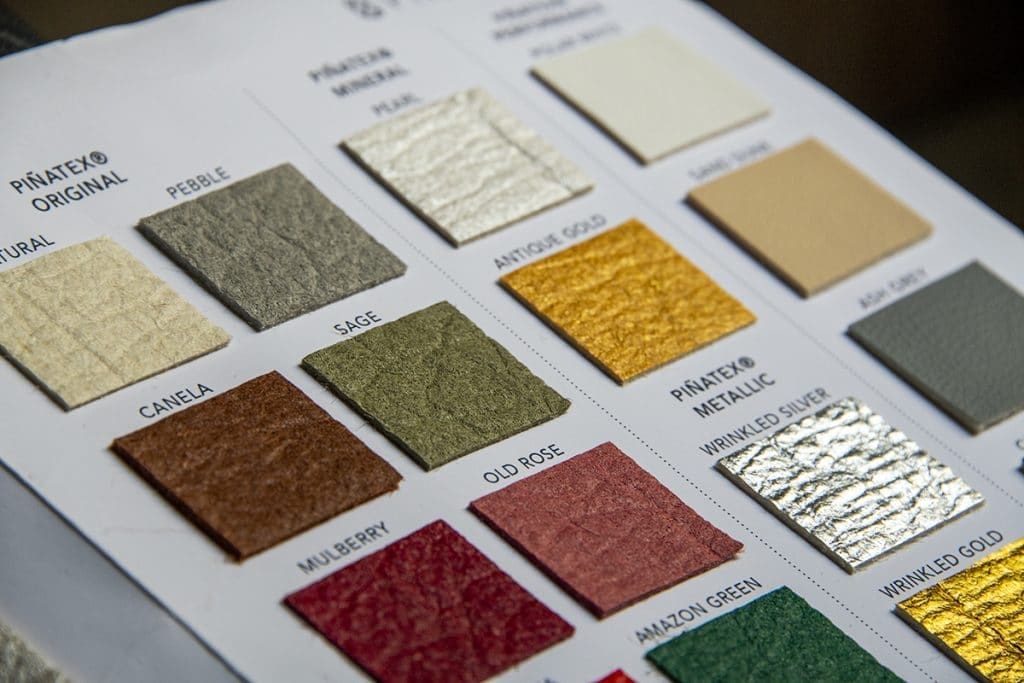
What is Piñatex is Made From?
Piñatex has a total of 4 collections, each with a different surface finish and with different intended usages, appearances, and different amounts of polyurethane (a.k.a. PU, a petroleum-based product).
We’ve put together the following chart, based on information provided in the Piñatex Sample Catalogue. Notice the different levels of PU used in each type. It is worth noting that the decrease of petroleum-based resin from 40% to 5% doesn’t directly reflect the figures in this chart. *One can only assume that the petroleum-based resins make up only a small part of the PU content. *
| Original | Mineral | Performance | Metallic | |
| Pineapple Leaf Fiber | 72% | 46% | 72% | |
| PU Content | 18% | 12% | 18% | |
| Polylactic Acid | 10% | 42% | 10% | |
| Potential Usages | ApparelAccessoriesFootwearInteriors | AccessoriesFootwearInteriors | ApparelAccessoriesFootwear | |
| Thickness (mm, +/- 0.2mm) | 1.6 | 2.5 | 1.6 | |
| Weight (gram/m2) | 475 | 570 | 475 | |
| Tear Strength (horizontal) | 126 N | 91 N | 163 N | 105 N |
| Tear Strength (vertical) | 218 N | 119N | 210 N | 121 N |
The manufacturer advertises a handful of uses. In fact, around 3,000 brands across 80 countries are already using Piñatex. While most of these brands are fashion-related, other uses for the fabric are constantly being explored and discovered.
How Much Does Piñatex Cost?
For fashion manufacturers, there is one main drawback. If you guessed PRICE, you’d be right. The cost per square meter is not just a little more, it’s astonishingly higher. As climate control and sustainability issues come more into the limelight, however, it seems that society is growing weary of the negative implications of low-cost goods and services. While the price point of this innovative material seems very high today, let us remain optimistic that in the years to come we’ll gladly source material based not primarily on its cost, but on its sustainability and ethical responsibilities to workers. For those thousands of brands deeply committed to environmental sustainability, it seems the benefits outweigh the costs.
The Look & Feel of Piñatex
Throw all the tech specs you want as us, but what is the product actually like? Does it feel good? Can we imagine it touching our skin or adorning our furniture?
Let’s investigate the Piñatex Collection more closely for what counts: the look and the feel. Just like an electric car, it sounds great on paper, good for the environment and this and that, but what if it only fit a person and a half and drove only 8km on a charge? It wouldn’t be of much use. Can Piñatex compete with leather not only on aesthetics but also functionality?
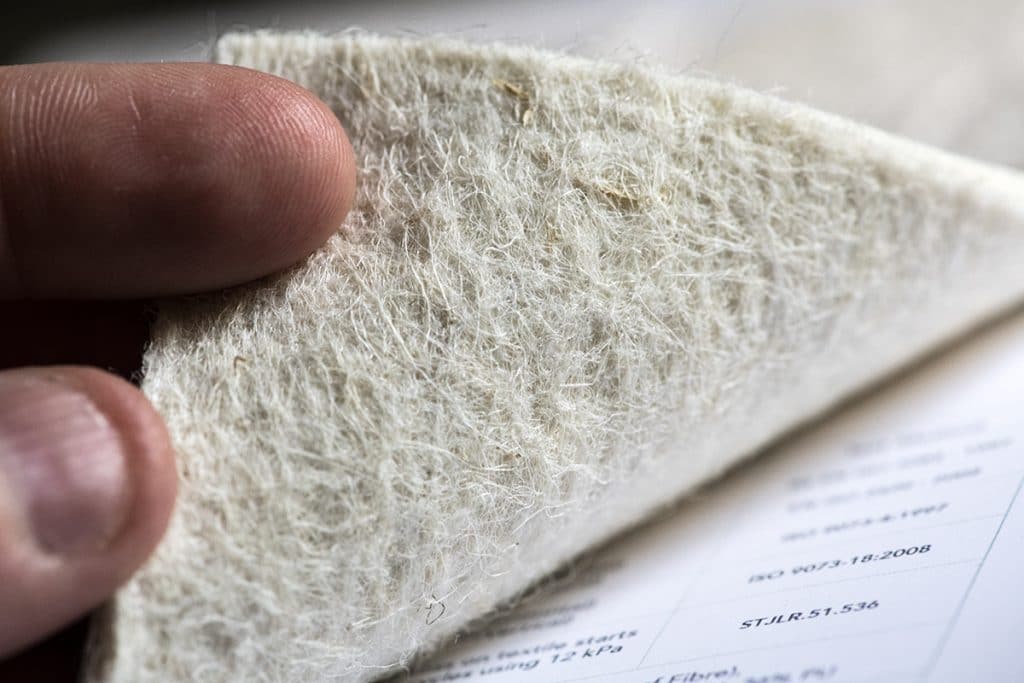
The most environmentally friendly of the Piñatex collections is their Original. It resembles leather, but like each of their different collections, only the top is designed to look and feel like leather. The bottom side of every swatch is a natural color felt as shown in the above photo. The differentiating factor between their entire line is basically just felt thickness and amounts of PU vs. pineapple leaf fiber. The amount of polylactic acid is largely the same across the board.
Piñatex Original
The Original and the Metallic feel softer and more pliable in between the fingers than the other collections. The Mineral feels quite stiff, almost like a piece of thick art paper. The Performance feels the most like leather, similar like faux leather, you may not actually notice the difference- which would make it much better for use on furniture than any of the others. It’s easy to imagine this material being used for car interiors or sofas.
Piñatex Original
The Performance is the thickest and overall strongest but it’s also perceived as the softest- probably due to the thicker felt base. While there are probably a ton of logical applications, it would be difficult to imagine it replacing leather under certain high-strain situations (i.e. motorcycle leathers, cowboy boots) simply due to the impressive strength of cowhide. According to one4leather.com, the tensile strength of leather is between 8-25 N per mm2, and the automotive industry expects a value of 200 N per 5cm, making Piñatex roughly comparable in strength to leather.
They definitely don’t smell anything like leather, however. And they unfortunately aren’t giving off any pineapple vibes either. Due simply to the fact that all these collections contain PU, they each smell like Halloween masks when placed closely up to one’s nostrils.
Piñatex Metallic
The Metallic collection looks like it belongs on the Mars Rover. Both the Metallic and Mineral Collection seem a bit on the gaudy side, but as stated, that’s simply following the market demands.
What is Piñatex good for?
It’s very clear that Piñatex is really doing their best to increase the marketability of their fabric- you would too if you were turning environmental trash into cash! One must wonder though, with knowing how long real leather lasts, would Piñatex hold up to the wear and tear of daily life? Would it simply be too expensive to make a double-sided coating of Piñatex Performance that could make sense for, let’s say, a man’s wallet? It certainly would be way too thick to fit in a back pocket with its existing specs. If the thickness could be reduced, would it last long enough? If it only lasted for 25% as long as a leather wallet, would the resources going towards making that wallet’s successor still offset the environmental impact of having chosen a leather wallet?
Now let’s be pragmatic. Most artificial recreations aren’t as good as their original counterparts. They don’t have to be though. This fabric, even with their highest PU-containing collection, is still a huge step in the right direction for the fashion industry. A material that uses just some natural materials is better than a material that uses none. Just as they said for the moon landing, one small step for man, one giant leap for .
Pineapples are just the beginning, check out our next article on another new fabric made from pomace.




